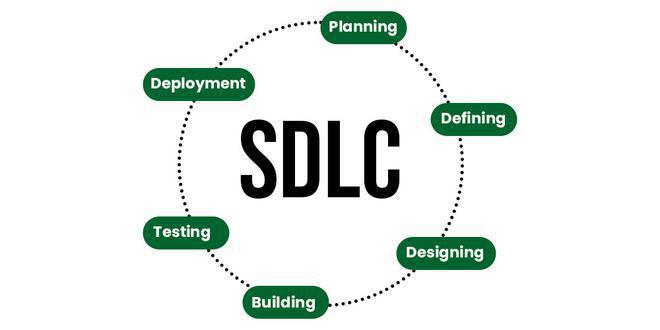In today’s fast-paced business landscape, the ability to deliver products and services more rapidly than competitors is not just an advantage—it’s a necessity. Organizations are increasingly recognizing that the speed of development can significantly impact market responsiveness, customer satisfaction, and overall profitability. As such, the quest for streamlined development processes has become a top priority for leaders across various industries. This article explores effective strategies for enhancing development efficiency, focusing on methodologies that promote agility, collaboration, and innovation. By implementing these practices, businesses can not only accelerate their delivery timelines but also foster a culture of continuous improvement that positions them for sustained success in an ever-evolving marketplace.
Table of Contents
- Enhancing Agile Methodologies to Accelerate Project Cycles
- Implementing Effective Communication Channels for Seamless Collaboration
- Leveraging Automation Tools for Increased Efficiency and Consistency
- Fostering a Culture of Continuous Improvement for Sustained Delivery Speed
- The Way Forward
Enhancing Agile Methodologies to Accelerate Project Cycles
To stay ahead in the competitive landscape, organizations must adopt dynamic approaches that shorten project cycles while maintaining quality. One effective strategy is to implement cross-functional teams that encourage collaboration between diverse skill sets. By breaking down silos, these teams can tackle project tasks more efficiently. Additionally, integrating automated testing into the development cycle allows for immediate feedback, enabling teams to address issues proactively rather than reactively. This shift not only enhances product quality but also streamlines the overall workflow.
Another proven method to enhance project delivery is the use of Continuous Integration and Continuous Deployment (CI/CD) pipelines. These pipelines automate the testing and deployment phases, significantly reducing the time it takes to release updates. When combined with regular retrospectives, teams can continuously refine their processes based on real-time feedback, ensuring that improvements align with project goals. Consider the following table that illustrates key metrics before and after adopting these strategies:
| Metric | Before Implementation | After Implementation |
|---|---|---|
| Average Delivery Time | 6 weeks | 3 weeks |
| Bug Fix Rate | 30% | 80% |
| Team Satisfaction | 60% | 90% |
Implementing Effective Communication Channels for Seamless Collaboration
In today’s fast-paced development landscape, establishing robust communication channels is paramount for enhancing collaboration among teams. Instant messaging platforms like Slack or Microsoft Teams facilitate real-time discussions, allowing team members to share insights and updates swiftly. Regular stand-up meetings, whether in-person or virtual, create opportunities to align on project objectives and address potential roadblocks instantly. Additionally, implementing project management tools such as Trello or Asana helps streamline tasks and provides a clear visual overview of responsibilities, ensuring everyone is on the same page.
To further leverage effective communication, organizations should prioritize feedback mechanisms that encourage open dialogue. This can include weekly check-ins or quarterly reviews, providing team members with the opportunity to voice concerns and share experiences. Utilizing collaborative document platforms such as Google Docs enables simultaneous editing and fosters a sense of ownership among team members. Another key element is establishing clear protocols and guidelines for communication, which can be summarized in a simple table:
| Channel | Purpose | Frequency |
|---|---|---|
| Instant Messaging | Quick updates/questions | As needed |
| Stand-Up Meetings | Daily sync on progress | Daily |
| Project Management Tools | Task tracking | Ongoing |
| Feedback Sessions | Address challenges | Weekly/Monthly |
Leveraging Automation Tools for Increased Efficiency and Consistency
In today’s fast-paced development landscape, adopting automation tools has become essential for teams striving for greater efficiency and consistency. These tools streamline repetitive tasks, freeing developers to focus on innovative solutions and creativity. By automating processes such as testing, deployment, and monitoring, organizations can experience significant reductions in time-to-market and enhance the overall quality of their deliverables. Common automation tools that can be integrated into the development cycle include:
- Continuous Integration/Continuous Deployment (CI/CD) tools: Facilitate automated code integration and deployment.
- Automated Testing Frameworks: Ensure code quality and functionality through consistent testing.
- Task Automation Software: Streamline repetitive project management tasks.
- Monitoring Tools: Provide real-time insights into application performance and system health.
Moreover, implementing automation not only improves operational efficiency but also fosters a culture of consistency across teams. By ensuring that processes are replicable and predictable, organizations can minimize human error and deliver a uniform experience, regardless of project scale or complexity. The following table illustrates some of the key benefits derived from leveraging automation:
| Benefit | Description |
|---|---|
| Time Savings | Reduces the time spent on manual tasks, allowing for quicker project delivery. |
| Improved Accuracy | Minimizes human errors, leading to higher quality standards in development. |
| Scalability | Facilitates handling larger projects without a proportional increase in resources. |
| Enhanced Collaboration | Enables teams to work together more effectively with standardized processes. |
Fostering a Culture of Continuous Improvement for Sustained Delivery Speed
Creating an environment that embraces change and promotes ongoing enhancements is vital in achieving rapid delivery outcomes. Teams should be encouraged to take risks and experiment with new methodologies, utilizing tools such as Agile and Lean practices to refine processes. Key strategies include:
- Regular Retrospectives: These meetings allow teams to reflect on their work, identify bottlenecks, and implement actionable insights.
- Empowered Teams: Providing team members with the autonomy to make decisions fosters ownership and a proactive approach toward problem-solving.
- Continuous Feedback Loops: Implementing real-time feedback mechanisms ensures that issues are addressed promptly, allowing for swift adjustments in the development process.
Additionally, investing in training and development cultivates skill enhancement, equipping teams with the latest tools and techniques for optimal performance. Integrating metrics to track progress not only provides visibility into the development workflow but also helps in celebrating small wins that motivate the team. Below is a simplified overview of essential metrics that can help guide improvements and sustain delivery speed:
| Metric | Description |
|---|---|
| Lead Time | The time taken from idea conception to delivery. |
| Cycle Time | The time taken to complete a specific task or feature. |
| Bug Rate | Number of defects reported post-release compared to total features. |
The Way Forward
streamlining development processes is not merely a goal but a necessity in today’s rapidly evolving business landscape. By adopting a combination of agile methodologies, automation tools, cross-functional collaboration, and continuous feedback loops, organizations can significantly enhance their capacity for faster delivery without compromising quality. Implementing these strategies requires a commitment to fostering a culture of innovation and adaptability, as well as investing in the right technologies and training.
As the demand for swift and efficient product development continues to rise, companies that prioritize these streamlining techniques will not only gain a competitive edge but also enhance their ability to respond to market changes and customer needs effectively. Embracing these principles will pave the way for a more efficient, responsive, and ultimately successful development lifecycle, ensuring that businesses can thrive in the fast-paced digital age.
Ultimately, the journey toward streamlined development is an ongoing process, one that requires continuous evaluation and adjustment. By remaining agile and open to change, organizations can navigate the complex landscape of development with confidence, delivering superior results that drive growth and innovation.






